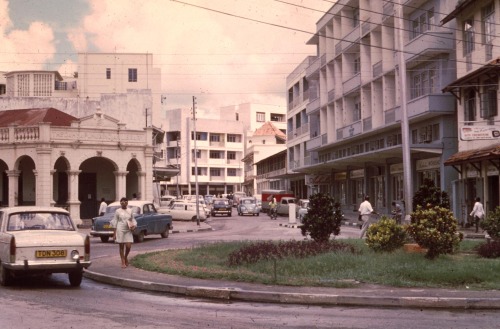Another in our series of Tanzania Decade by Decade
What should one make of Tanzania in the 1970s?
Those who have travelled through many cities and towns in Africa will be familiar with a foul stench that greets them in most of these places. Likewise, there were storm clouds gathering both from within the country and around the region.
In Uganda, after years of discontent, Milton Obote was toppled by one Idi Amin in a military coup in early 1971. Tanzania and Kenya’s relations were characterised by wariness of each other on both sides. Amin’s arrival on the regional stage would prove to be a huge destabilizing force. The then East African Community’s highest body, the East African Authority, which comprised all three presidents from member states of Kenya, Tanzania and Uganda would never meet again after Amin’s coup.
While it has come to be extremely difficult to assemble the EAC’s full house in recent years, this does not come anywhere near the disruption that happened in the 1970s during the first attempt at regional integration. The effectiveness of the common market was greatly reduced. The ill-fated invasion of Uganda by rebels and supporters of deposed president Milton Obote, from Tanzania in 1972 did not help matters. It is a lifetime away now, but back then Somalia’s strongman in Siad Barre brokered a peace deal between Tanzania and Uganda-after Kenya’s Jomo Kenyatta had opted to steer clear of his two feuding neighbours-to deescalate the situation but tensions remained high and the two countries remained hostile towards each other.
In the South, Mozambique gained her independence in the mid-1970s but Malawi’s Hastings Kamuzu Banda was not helpful at all in liberation efforts. The western borders of Tanzania remained troubled lands. Congo-Kinshasa, which had been renamed Zaire by Mobutu Sese Seko was at sporadic war with itself as rebel groups attempted to topple him or break up that vast country. One of those who failed in that endeavour was one Laurent Desire Kabila who set up shop in Tanzania, to buy time for a far better auspicious day. In Rwanda, as in Uganda, another soldier had toppled the government.
In Burundi, soldiers were in charge of politics after another soldier there launched a first coup in 1966 which abolished the kingdom, had remained troubled in the 1970s which led to a series of killings in 1972 leading to waves of refugees who were scattered across the region, including those who settled in Tanzania. Another coup in 1976 did not silence the guns or the killings there.
On the domestic front, the storms were severe. The stars did not align at all.

In 1972, Zanzibar president Abeid Amani Karume was assassinated, shocking the country to its core. The bold political and economic experiment that was Ujamaa na Kujitegemea crash landed as reality collided violently with idealism.
The government lost patience with the slow pace of people moving into Ujamaa villages. This unleashed the violent aspects of the state where more than half of the entire population of the time was moved into such villages throughout the country. Legislations were passed to make the country quicken its pace towards the realisation of a dream of a country that is self-sustaining. The process was a failure in many ways.
Coupled with a severe drought in 1973 and 1974, the country’s economy was on its way to its proverbial knees. The New York Times, put it this way: “a combination of the dislocation in international economic relationships over two years and the effect of two years of drought on the almost entirely agricultural and fragile economy of this country of 15 million people has propelled Tanzania into the gravest crisis since 1964.”
Tanzania was caught between a hard place and a rock.
In 1977, a year of contrasts where the ruling political parties in Tanzania merged to form a political juggernaut that is Chama cha Mapinduzi (CCM), and the collapse of the first EAC, was followed by Tanzania’s war with Uganda in 1978/1979, the economy could not take any more shocks and pressures.
The experiences of the seventies showed that while Ujamaa na Kujitegemea as a socio-political policy was still relatively successful, it was an economic failure. While the seventies swung the door shut with a bang; the difficulties experienced during this time turned the eighties into an experimental years. Text goes here..
Share this news
This Year’s Most Read News Stories

Juma Haji Duni: A legacy of resilience and leadership in Zanzibar politics
The recurring inefficiency among some contractors could lead the government to favour foreign firms, sparking criticism from stakeholders advocating for local participationContinue Reading

Zanzibar Investor British Dad talks about being jailed on paradise island
British investor and hotelier Simon Wood, from Preston, Lancashire, and his wife Francesca Scalfari were locked up in a Zanzibar prison charged with money laundering. Both were released after pressure from British Embassy.Continue Reading

Kampuni ya Elon Musk kuzindua mtandao Tanzania
Huduma ya mtandao ya Elon Musk ya Starlink inatarajiwa kupatikana nchini Tanzania katika robo ya kwanza ya 2023, huku wachambuzi wakisema maendeleo hayo mapya yatakuza uchumi wa kidijitali.Continue Reading











